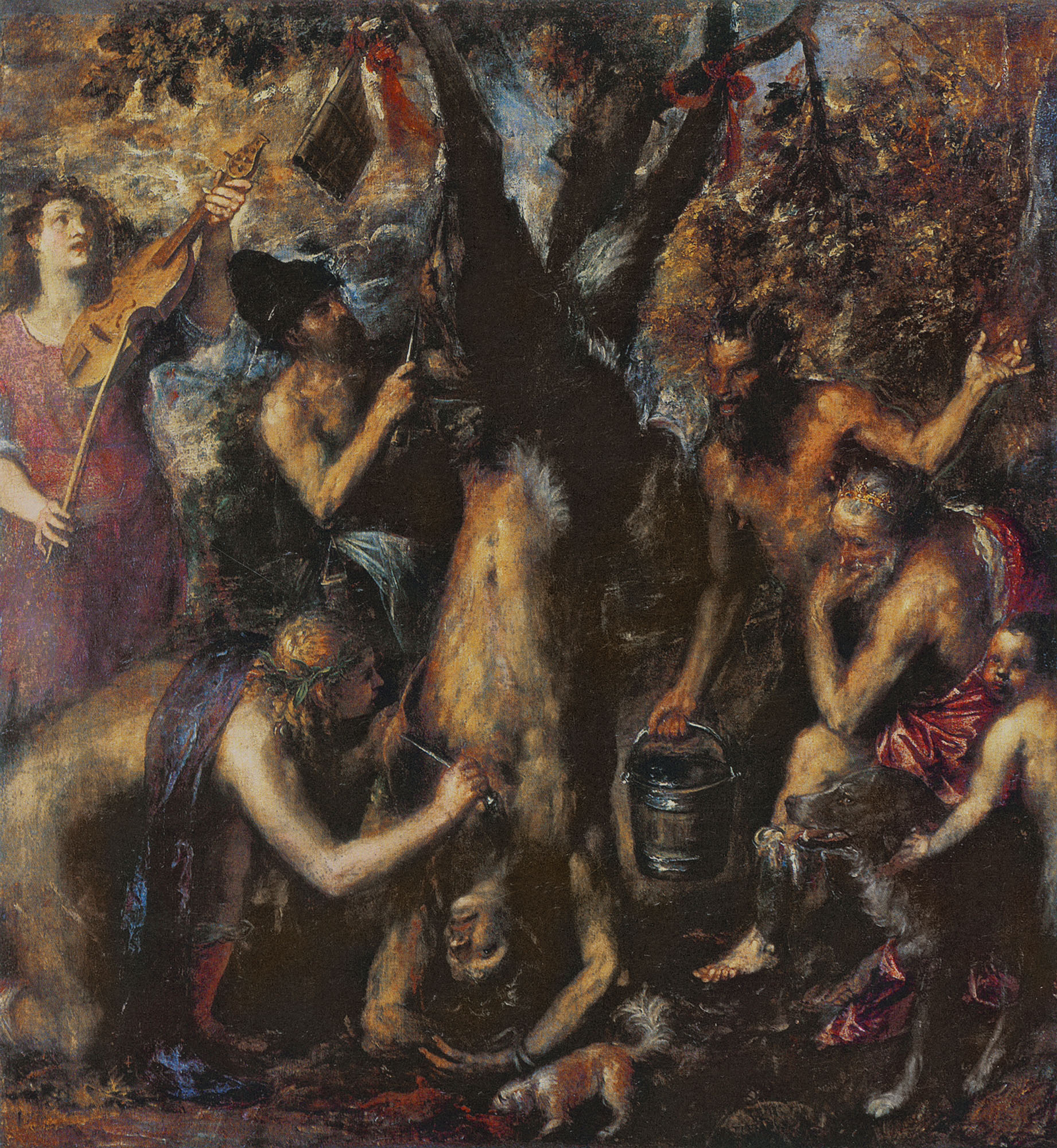“The Flaying of Marsyas” is a mythological painting by the artist Titian, completed in the year 1576. It is an oil on canvas that subscribes to the Mannerism movement, particularly notable during the Late Renaissance period. The artwork measures 212 by 207 centimeters and currently resides in the Kroměříž Archbishop’s Palace in Kroměříž, Czech Republic.
The artwork vividly portrays the brutal myth of Marsyas, a satyr from Greek mythology who was flayed alive by the god Apollo. At the center of the composition, Marsyas is depicted hanging upside down from a tree, his skin being peeled away by a figure who is attentively performing the gruesome task. On the left side, Apollo stands with a violin, a nod to the nature of the contest that led to Marsyas’s punishment. There is a stark contrast in expressions; Marsyas appears to be in agony, while Apollo seems detached and indifferent to the suffering before him.
Surrounding these two central figures are various onlookers who appear with mixed reactions to the event unravelling before them; some are engrossed in the task while others seem less attentive or emotional. A small child or figure, possibly representing Olympus, marsyas’ pupil, is positioned near the bottom right, closely observing, or perhaps recoiling from, the sight. The dog in the foreground adds a domestic touch to the otherwise macabre scene. The overall tone of the painting is dark and somber, with an intense emotional weight that captures the viewer’s attention.
Titian’s command of the oil medium is apparent in the intricate rendering of texture and flesh, which gives the artwork a visceral quality. The figures are executed with a fluidity and dynamism characteristic of Mannerist tendencies, and the use of chiaroscuro—the contrast of light and shadow—is effectively used to enhance the drama and three-dimensionality of the scene. In this work, Titian not only illustrates a myth but reflects on themes of suffering, punishment, and the nature of artistic rivalry.






















